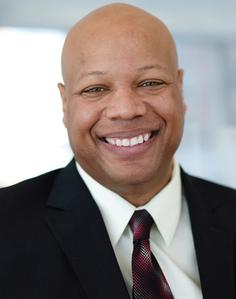|
|||
|
|||
Charles Waters is a children's poet, actor, educator, and coauthor (with Irene Latham) of African Town; Dictionary for a Better World: Poems, Quotes, and Anecdotes from A to Z; and the award-winning Can I Touch Your Hair? Poems of Race, Mistakes, and Friendship. He lives near Atlanta.
Bestselling author and Cherokee Nation citizen Traci Sorell writes inclusive, award-winning fiction and nonfiction in a variety of formats for young people. She is a two-time Sibert Medal and Orbis Pictus honoree for her nonfiction work. Her first five books have received awards from the American Indian Library Association.
Here, Waters and Sorell, the coauthors of Mascot (Charlesbridge, September 5, 2023), discuss bonding at a Highlights Foundation intensive, lament the lack of verse novels in their childhoods, and share their lived experiences with Native mascots.
What sparked the idea for Mascot?
Charles Waters: I had been working with someone else on this idea for a book proposal, and the editor turned it down; however, I couldn't get the idea out of my head. I had first met Traci at the Highlights Foundation novel-in-verse intensive. We bonded over our first books coming out at the same time and our joint passion for literacy for young people. Flash-forward two years later: this idea had never left me, and it hit me like a bolt out of the blue that Traci would be the perfect person to work on this with me. I crossed my fingers, reached out to her, and she said yes!
Why did you choose to present the story in verse?
Traci Sorell: There are a lot of emotions around this issue. Writing in verse provides tools to elevate those feelings through imagery and literary devices that better convey what characters experience than prose does. Verse allowed us to jump in and share character interactions to keep the narrative flowing at a quicker pace.
Waters: I wish verse novels had been all the rage back when I was a kid. I might have gotten into reading a lot earlier. There's something about all that space on the page with minimal black text that makes it easier for me to digest the words. Add in poetic devices, metaphors, similes, and the like, and voilà! It made more sense to tell this story in verse.
What excites you about this project?
Waters: I feel it's a nuanced book because life is filled with nuances. Different perspectives on something are good. Vital, in fact. We're not out to get anyone, it's not a gotcha! kind of book. We're telling a story as honestly and empathetically as possible about an issue that has infected our society for too long.
Sorell: I love that the story presents the issue from a variety of perspectives and gives readers the opportunity to see inside the lives of young people who may or may not be similar to them. Setting it within a Washington, D.C., suburb, where a larger percentage of the population is affluent with higher education, shows that the challenges of objectifying others and racism still exist. Using Native people as mascots is a nationwide problem in suburbs, large metropolitan areas, and small towns. No place is immune.
The characters in Mascot have varying perspectives about the issue at hand, including "that was hundreds of years ago" and "ignorance really is bliss." Why did you choose to include multiple viewpoints instead of focusing on just the viewpoint of Callie, a Cherokee Nation citizen?
Sorell: We wanted to reflect reality. There are many different perspectives where centering the humanity and the present-day existence of Native people gets challenged. The views of adults weigh heavily into this issue, but ultimately young people must figure out where they stand.
Waters: If the story focused on Callie only, it would possibly discount varying views on this subject. Plot needs to have tension to proceed, and these different viewpoints automatically lend themselves to that.
You mention that the University of North Dakota changed its mascot to the Fighting Hawks in 2015. What kind of research did you do in preparation for writing this story?
Waters: We had multiple Google docs filled with articles, think pieces, and at least one dissertation about this subject. I think it came out to about 75 different links, and we read each one of them thoroughly.
Sorell: I drew upon my prior knowledge of the issue and my lived experiences, including working at the University of North Dakota in the early 2000s, when the mascot issue was very volatile on campus. I witnessed up close the harassment and intimidation of students, tenured faculty, staff, and community members. I've worked and lived in Washington, D.C., and its suburbs, so I knew who makes up that population. We sought feedback from others (such as a young Black Cherokee woman in eighth grade) to help ensure we got the representation and language usage right.
What would you say to young people who are going through something similar at their own schools or in their community?
Sorell: You are not alone. Other young people have traveled this same path. In the back of the book, we provide links to resources that can help young people address this issue in their community and recognize they are part of a larger movement to rid K-12 schools of these demeaning and stereotypical caricatures.
Waters: Being around like-minded people, who treat each other with respect and honesty, is so important. So, do your research, find like-minded people, stay focused, forge ahead, and be kind to yourself, because there will be obstacles in your path.
What do you want readers to take from this story?
Waters: That true change is not easy.
Sorell: I hope they understand that this problem of stereotyping and imagining Native people goes back even before the founding of the U.S. In the 21st century, we know better, so our society must do better by our young people in educational environments and in sports. --Lana Barnes



